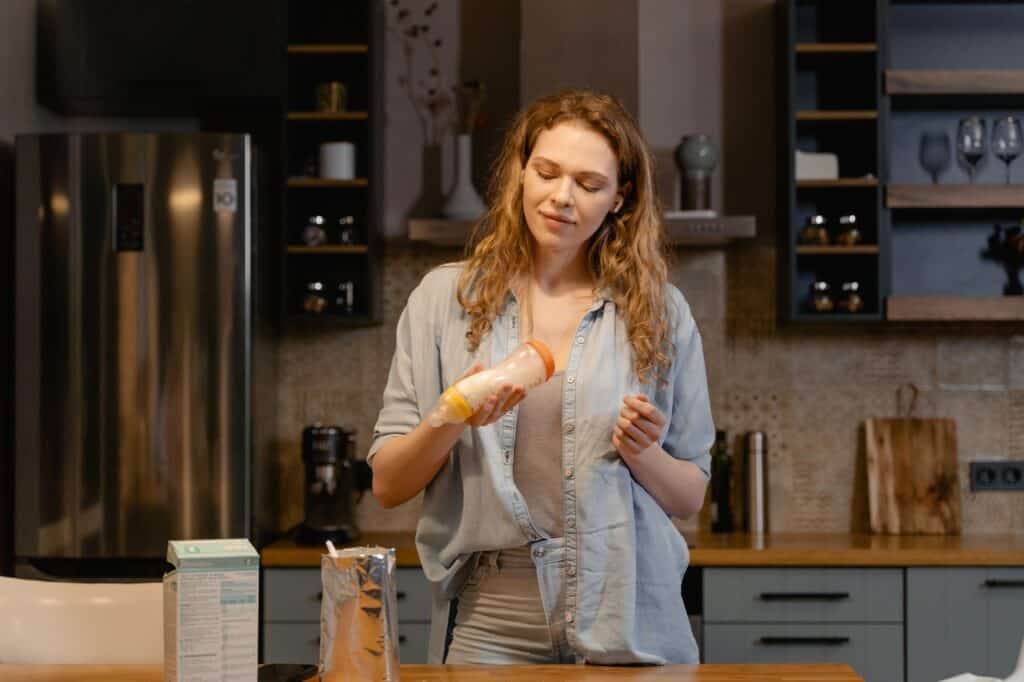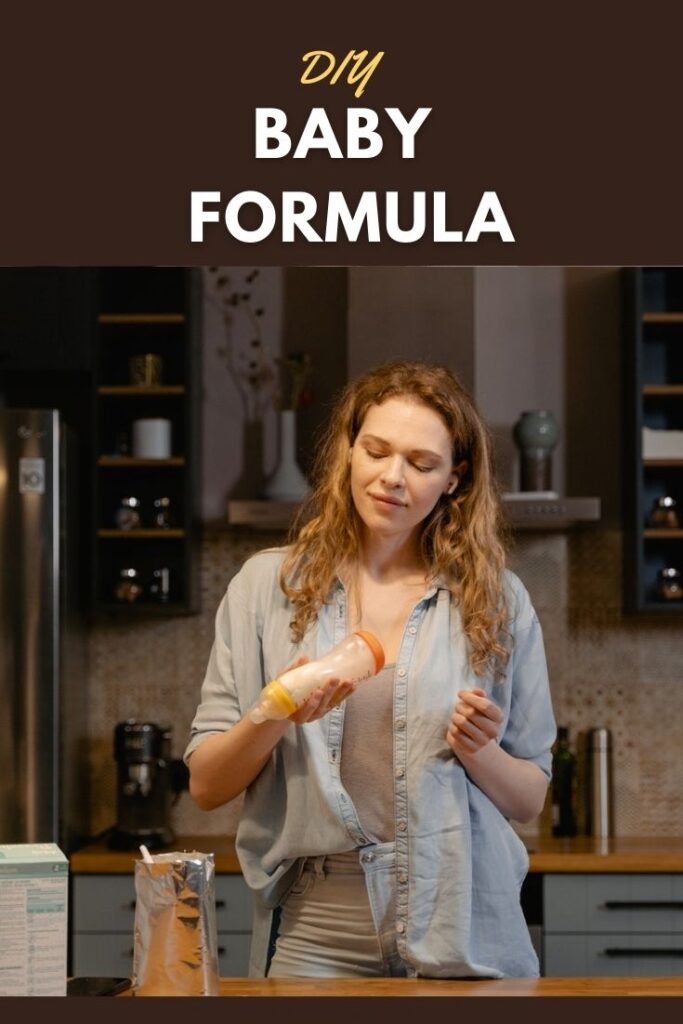You’re a lucky parent if you have been able to match your newborn with the perfect infant formula. The first six months of your baby’s life should be well-guarded with special attention to make sure that your baby is healthy and happy. Your baby’s growth spurt from birth till the age of six months is crucial in terms of their physical and cognitive development. This is exactly why new parents feel overwhelmed about choosing the right formula for their babies.
Infant Formula
Let’s first establish that although breastfeeding is highly recommended from birth to at least six months of a baby’s life, it is still completely safe to feed your baby infant formula—if you must. We can assure you that it will meet your baby’s nutritional needs if you are feeding the right one.
It’s not as simple as it sounds. Going through the trial and error of finding a formula that you and your baby are both happy with is not easy. Firstly, walking down the baby aisle of a superstore can feel like a lot when you are beginning your hunt for baby formula. You will be bombarded with all the different kinds and brands on the shelves. The options added to all the myths and theories of formula vs breastfeeding can get you really confused.
The starting point for any new parent should be the ingredients of the formula. If you have had a discussion with your baby’s pediatrician, you might have an idea of what you want. You can get many different ingredients such as cow’s milk, soy milk, and even goat milk formula. There are also hydrolyzed formulas for infants that are broken down into smaller proteins for easier digestion. It is common to feel overwhelmed with that many options, so make sure you speak to your doctor in order to make the right choice.
Why Do Parents Switch Formulas or Mix Them Together?
Most babies are able to tolerate different tastes pretty well. So if you try and feed your baby different brands, you’ll notice that they usually have preferences. So try and stick to that—trust us, it will make your life much easier. A happy baby means happy parents. However, you might have to go through a little trial and error to find one that suits your baby’s tummy, tastes, and nutritional needs.
Many parents often feel unsatisfied with their choice of formula when it comes to their baby’s growth. They find themselves in a situation where they feel the need to blend different formulas to get the right mix for optimum results. There are various reasons to do so. Mothers have complained about certain formulas not suiting their baby’s tummy, causing indigestion or constipation. Sometimes babies also refuse to drink because they don’t like the taste of the formula. There are cases when parents also end up with packets that they received as gifts, so they mix it with the regular formula to prevent it from being wasted. Formula is expensive—not something you want to throw away.
Sometimes, it becomes a medical necessity for parents to mix formulas per the doctor’s advice. Infants can have allergies or other types of reactions to certain ingredients, which is why doctors often recommend a certain blend or mix of formulas to cater to the baby’s needs. In this article, we will be looking at why and how parents mix different formulas and answer all the questions around giving a variety of formulas to your infant.
Is It Safe for Babies to Switch Formula?
In general, it is safe for babies to try out new formulas. But to answer this question precisely, you should always check with the pediatrician first. Honestly, it is okay to switch around your baby’s formula, or even mix two different types together—but it totally depends on your baby. Every baby is different, and their taste in formula is also different. If it is cow’s milk, soy milk, or hydrolysate-based, it is safe to mix the formulas together. They usually contain similar ingredients, so your baby will probably not develop tummy issues. However, as we mentioned, your baby still might suffer from stomach aches and indigestion, so we always recommend checking with the pediatrician for dietary requirements to be on the safe side.
If there are any allergic concerns that you have noticed or have been advised of by the baby’s doctor, please keep an eye out for those ingredients in the different formulas. Although most formulas are created with only slight variations, it can still cause bad reactions if your baby is sensitive to certain ingredients.
If you are switching formulas, remember to monitor your baby’s sleep schedule, the odor of gas, color of stool, frequency of urine, etc. This is the only way you can tell if your mix is suiting your infant. Try and pay close attention to spot any potential allergic reactions. While the change in color of stool or odor of gas is normal when the baby is being given a new mix of formula, look out for extreme reactions like forceful vomiting, digestive bleeding, or hives. You must immediately stop feeding that formula mix to your child and check with the pediatrician to prevent further reactions.
When to Switch Formula Because of Gas or Other Issues
Babies develop indigestion issues for various reasons. Some infants are colic, have a sensitive tummy, or have difficulty keeping their food down and tend to vomit it out. These are all reactions to tummy sensitivity or allergies from different ingredients like dairy, etc.
Mild indigestion is common and normal in infants. But if the issue increases upon feeding formula, or you notice other symptoms such as a skin reaction, it’s best to take a step back and consult with the doctor. The resolution can sometimes be as simple as changing the brand of formula or switching to a soy-based blend. But not in all cases.
Parents can get really confused by the list of reactions their babies are having, even with mild ones. Skin reactions can be caused by the skincare products being used, or the detergent being used to clean the baby’s clothes. So it’s vital to monitor every single thing around them to come to a conclusion. Changing a baby formula due to a skin reaction that your baby might be getting from your lotion may increase your troubles.
Sometimes, babies with severe allergies or sensitive tummies have to be on a hydrolyzed or hypoallergenic formula where the proteins have been broken down into smaller components. These are known to be easier for infants to digest; however, please refrain from choosing a hydrolyzed formula for your baby by yourself. Speak to your doctor to navigate you in the right direction, as they are made for special allergies.
There are other cases when the doctor may feel that your baby is not growing adequately. To enhance your baby’s growth spurt, doctors often recommend switching to a formula that is fortified with extra iron to help with your infant’s weight and overall growth.
It is important to remember to always check with your child’s doctor about the tiniest reactions you and your baby are experiencing before making a major change from cow’s milk to soy-based.
Inter-brand Switching – Better or Worse?
Parents can get obsessed with certain brands when they finally find the perfect match in terms of affordability, taste, suitability, accessibility, etc. Sometimes you may struggle to find the same formula if your local store has run out, or there is a shortage in supply. During COVID-19, many parents faced scarcity in terms of sourcing their choice of formula. Not just for infants; it was challenging to feed the entire family with home-cooked meals, as many restaurants and shops were also closed due to lockdown. It was seen that parents opted for the next best option by sticking to the same brand but a different blend. This can be the best way to go about switching your baby’s formula.
Making small changes by choosing a formula from the same brand will not be as harsh on your baby’s tummy. The transition somehow is easier for their little stomachs. Please read the instructions on every label of formula you pick for your baby to be well-informed about what you are feeding them.
Switching Back and Forth
Alternating types or switching back and forth is not a great idea. It can be harsh on your baby’s tummy, particularly if they already struggle with their digestion. Remind yourself to check the ingredients constantly if you are still having to switch between brands and blends. Product availability has been an issue for the last few years with the pandemic. Many suppliers have stopped selling to certain countries due to border restrictions. So if you are in a position where you are having to constantly change formula brands, try to make a list of ingredients that suits your baby best. Pick accordingly.
You can also try a DIY baby formula until you are able to find one that matches your baby’s needs perfectly. Here’s a quick recipe to help you.
This is a very traditional and tested recipe for baby formula made with evaporated milk. In times of emergency, you can opt for this quick and easy recipe. Please note that this recipe should not be the only source of your baby’s nutrition. If you ever opt for an evaporated milk baby formula, please check with your doctor about adding supplements to meet your baby’s nutritional needs.
DIY Baby Formula
Equipment
- Clean container that can hold a quart
Ingredients
- 13 oz evaporated milk whole
- 18 oz water
- 2 tablespoons of white granulated sugar or 1 tablespoon light Karo syrup either work
Instructions
- Clean and sanitize the container in which you’ll be mixing.
- Mix all the ingredients together.
- Stir gently until the syrup or the sugar is completely dissolved.
- Once your child has been fed, it’s best not to store them for over three days. So make accordingly to avoid wasting it.
Conclusion
In short, you are allowed to mix formulas to meet your baby’s requirements. We suggest you avoid blindly selecting them as it can complicate it for you later on. Try and make a list of ingredients the formulas have and check with your doctor. If your baby is free from allergies and stomach issues, you will still have to be mindful about what you were previously feeding them. You may have been lucky and found a blend that is easy on your baby’s tummy. So stick to similar ingredients to avoid reactions. Having said that, there is no guarantee that those little humans will approve it right away.
To summarize, it is safe to mix similar formulas (with similar ingredients) but not different types. Number one rule: If it makes your baby fussy, just avoid it, and while walking in the baby aisle of grocery stores, remember to stay away from one-size-fits-all.
Notes:
Photos by MART PRODUCTION from Pexels.
Pin this recipe on Pinterest.





This information is dangerous and incorrect. Please don’t consider making your own formula at home. Babies need a wide variety of nutrients, vitamins and minerals that are precisely balanced in breastmilk and commercial infant formulas. As a registered dietitian, we see terribly unfortunate outcomes when parents receive misleading information like this. Please consult with a dietitian or a pediatrician anytime you have concerns regarding your child’s growth or tolerance of breastmilk or formula